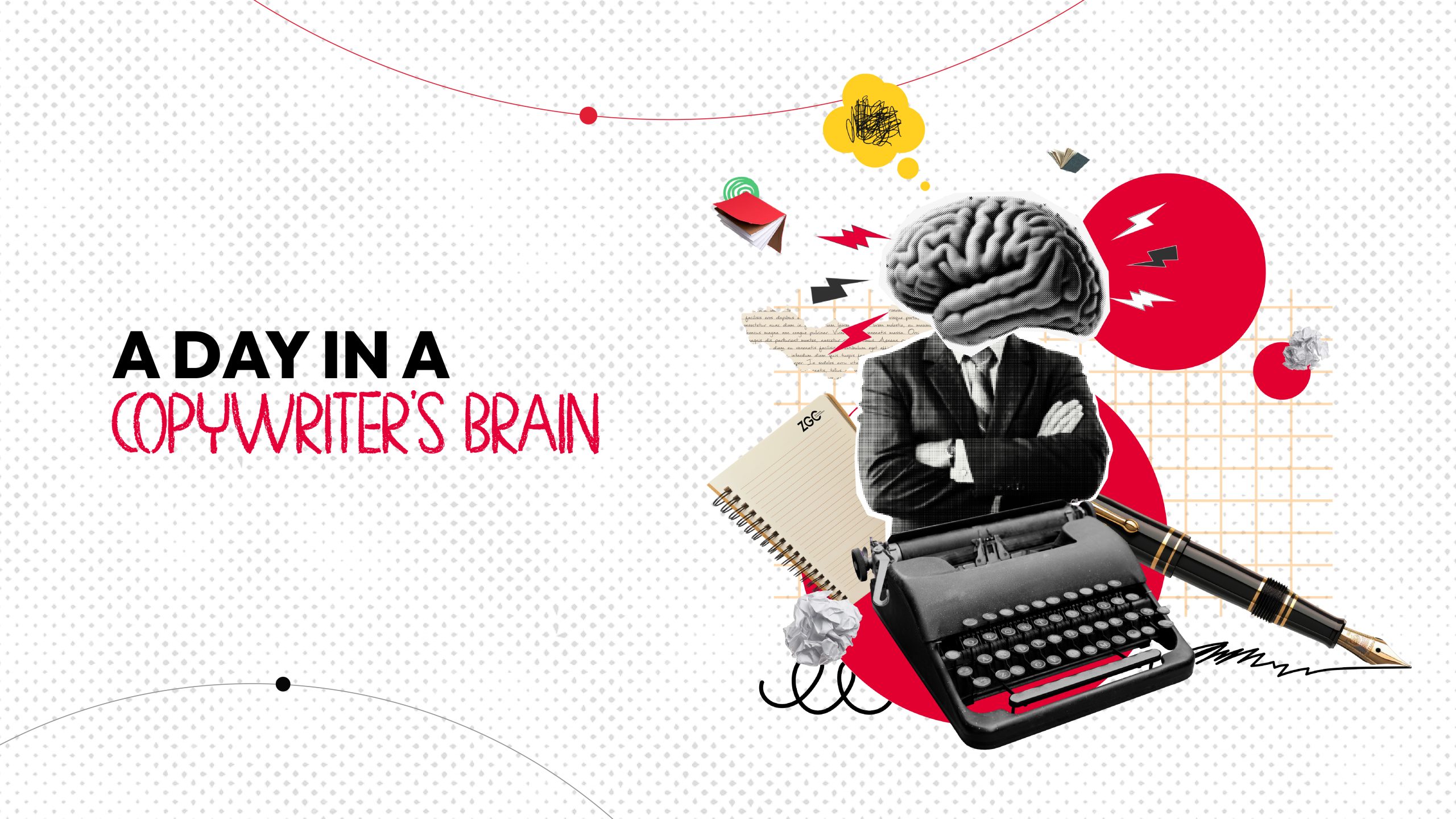A Day In a Copywriter’s Brain

On the surface, copywriting looks like choosing the right words.
But inside a copywriter’s mind? It’s fascinating and honestly messy.
Each sentence you see has likely been written, rewritten, and questioned more times than anyone would guess. The final result might be clean and confident, but the process behind it is anything but linear.
We’re constantly switching between two mindsets: the creative side that wants to play with words and chase weird metaphors, and the analytical side that’s focused on clarity, structure, and strategy. It’s like trying to be a poet and a salesperson at the same time, and somehow making both voices work together.
In the background, there’s always a layer of psychology running quietly beneath the writing. Not in an academic way, more like instinct. We’re thinking about attention spans, decision triggers, subtle nudges. What might make someone pause? What would make them feel seen? What would make us click?
So before we write anything, we try to walk through the reader’s experience.
Where might they be when they see this? What do they already believe? What would they need to hear next?
We picture it like a little sequence: the headline grabs, the next line earns interest, the rest of the copy builds trust or excitement, and somewhere along the way, they feel ready to act. If it’s done right, it should feel effortless. But that effortless feeling usually takes a lot of effort.
And truthfully, the majority of that effort goes into editing. The first draft is just the beginning. We second-guess ourselves constantly. A single word can throw off the tone. A sentence that looked fine yesterday feels off today. Most of the job isn’t writing new things, it’s trimming, tweaking, and fine-tuning until the message actually feels right.
On top of that, there’s tone, which changes with every brand.
One client wants to sound bold and clever. Another needs to be calm and reassuring. Sometimes we switch between voices in the same day. That flexibility is part of Brand Strategy, making sure every word aligns with not just the message, but the bigger story the brand is trying to tell. It’s not just about using the right words, it’s about becoming someone else for a while. Like low-key method acting, but for email campaigns.
And before we even write a word, there’s research. A lot of it.
We dig through customer reviews, Reddit threads, social media comments, anywhere real people are talking about the product (or their problems). We’re not just looking for facts. We’re listening for language: the way people describe what they want, what they hate, what they hope for. Those details make their way into the copy, not by accident, but by design.
Of course, inspiration helps. Sometimes the right line shows up in the middle of a walk, or while making coffee, or when we’re trying to fall asleep. Other times it doesn’t show up at all, and we just have to sit there and work through the blank screen anyway. Either way, the process keeps moving, usually thanks to deadlines.
And throughout it all, there’s a constant loop of feeling unsure and then (maybe) kind of proud.
“This is terrible.”
“Actually, this might be kind of good.”
“Nope. Back to terrible.”
Eventually, something clicks, not always dramatically, but enough to keep going.
That’s the part people don’t see: the noise, the small decisions, the mental rewrites that happen before anything hits the page.
But all of it, the psychology, the reworking, the quiet overthinking, gets poured into those few lines someone might scroll past in two seconds.
And weirdly, we love that.
Read More Articles :
